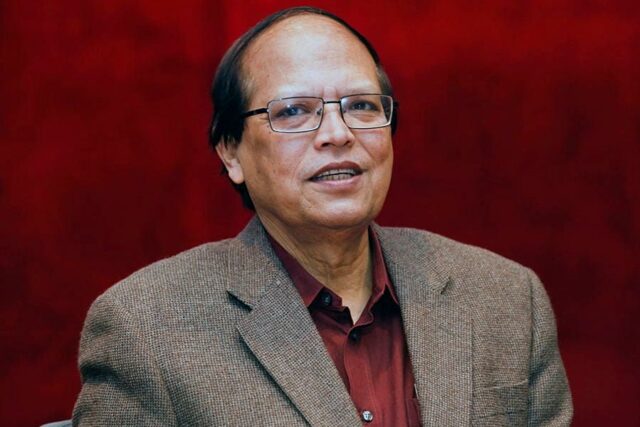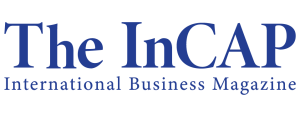
A vibrant Bangladesh is destined to become a developed country – Dr. Atiur Rahman
Bangladesh has completed its fifty years of its existence with both ups and downs. However, the gains have been more overwhelming than the losses. The newly liberated country under Bangabandhu’s leadership started its development journey from a narrow ‘metho path’ (rural road) with a total size of its economy of 8 billion USD. The per capital income was only USD 93. The share of savings to GDP was just 3 percentage. The same for investment was 9 percentage. The rate of poverty was more than 80% with expectancy of life at birth of about 47 years. The inflation rate was hovering over sixty per cent. The food deficit was staggering in the wake natural calamities and adverse food diplomacy by a superpower instigated by ill-motivated Pakistan which was squarely defeated in 1971 war of our liberation.
That Bangladesh has now been able to reach the broad highway of development with the size of the economy of 411 billion USD with per capital income of USD 2500 plus.
During last fiscal year Bangladesh’s economy growth rate was more than 4% while global growth contracted by 3.5%.
The economy is expected to grow by more than 7% in the current fiscal year as forecasted by the Standard Chartered Bank and as well as the Bangladesh budget document. The growth rate of Bangladesh remained 6% plus over the last decade or so. The sustainability of this growth rate owes a lot to the fast moving modern and diversified agriculture, consistent inward flow of foreign remittance and stunning performance of the export-sector. The phenomenal growth of apparel industry must be credited for this extra-ordinary performance of Bangladesh economy. The stability of the macroeconomy has also been contributing significantly to maintaining this growth momentum. The farsighted policy for digital technology and inclusive finance has also added fuel to this dynamic growth process which has been augmented by the stability of well performing consumption by the many. That Bangladesh has been performing well in the growth process has also been complemented by other institutional finance and development institutions. IMF’s World Economic Outlook of 2021 postulates it to be 6.5%. World Bank’s estimate is 6.4% and ADB’s 6.8%.
All these estimates support Bangladesh expectation of becoming a high-income country by 2031 when its growth rate will be 10%, per capita income 12,000 USD plus, inflation contained around 5%, savings to GDP ratio at 37.7% and that of investment at 40.8%. IMF’s current World Economic Outlook points out that size of Bangladesh economy will be 517 billion USD in 2026. The Standard Chartered Bank’s research team also thinks it to be 500 plus billion USD in another five years.
Center for Economics and Bureau Research (CEBR), a British think tank postulates Bangladesh’s economy will be 34th global economy by 2034. It was 40th in 2021. Others like PwC expect it to perform even better in the coming days.
The nominal GDP per capita was 7.8% in 2019-20 fiscal year defying pandemics challenges as against China’s 6.9% and India’s 3.1.
During 2011-18, this was 9.4% compared to China’s 7% and India’s 3.9%.
No doubt, that UN General Assembly recently approved formally the graduation of Bangladesh from the status of LDC to a developing country which will take effect from 2026. Both UK and EU have committed to continue the trade facilities for Bangladesh as it has been getting now up to 2029. Bangladesh will have to invest more in people to make them more efficient to live up to the challenges of a developing country and finally a developed country. Simultaneously, it will have to focus more on smart economic diplomacy and reforming trade policy to sign more free trade agreements and preferential trade arrangements to continue its drive for better performance in exports to avoid middle income trap.
To continue this robust growth process to align Bangladesh’s dream of becoming a developed country by 2041 we must remain focused on the following:
- Continue the heritage of indigenous growth, originating from mostly consumption (now 63%) and domestic demand. Support modernized mechanization of agriculture.
- Continue investing in the people promoting productive and humane education, inclusive health system and more robust social protection to address the short-term challenges of the pandemic and long-term challenges of climate change.
- Emphasize on enhancing productivity to prepare the workforce with artificial intelligence, robotics, big data management to embrace 4th Industrial Revolution.
- Continue support for diversification of exports without undermining the already best performing export sector, particularly the apparel industry.
- Support tourism and aviation sector with huge potentials in post-covid transformation as this sector may experience V-shaped recovery.
- Emphasize food processing industry including supporting SMEs and FDIs.
- Further expand software industry which has the potential of becoming second RMGs. Besides high-tech infrastructures give more fiscal support to the R&D for all strategic sectors.
- Focus on sustainable urbanization which must be green, climate friendly and linked to special economic zone Replicate green Rajshahi as much as possible.
- Emphasize to explore the potential of Bangladesh in joining the regional and global value-chains by further improving connectivity to make Bangladesh a regional hub.
- Mobilize more domestic resources to move up the Tax/GDP ratio to 20%.
- Continue investing in infrastructures, both physical and digital, in addition to completing the mega projects as fast as possible. These will, indeed, be the growth and employment multipliers and turn out to be game changers.
- Finally continue to emphasize on ‘Made in Bangladesh’ campaign with more rigor.
Bangladesh must continue to promote transformative policy regime to make its inclusive development journey more sustainable.
Bangladesh must continue its experimentations to move forward drawing lessons on what works and what does not within the country’s changing dynamics of political economic and social configurations. It has a rich history of policy innovations, particularly low-cost solutions, to serve many and not a few.
It can certainly cash on these gains and further innovate its policies, with more emphasis on strengthening the base of pyramid. Quality implementation is a must to live up to its deeply rooted aspirations of shared prosperity for achieving ‘Sonar Bangla’.
Dr. Atiur Rahman
Bangabandhu Chair Professor at Dhaka University
Former Governor of Bangladesh Bank












